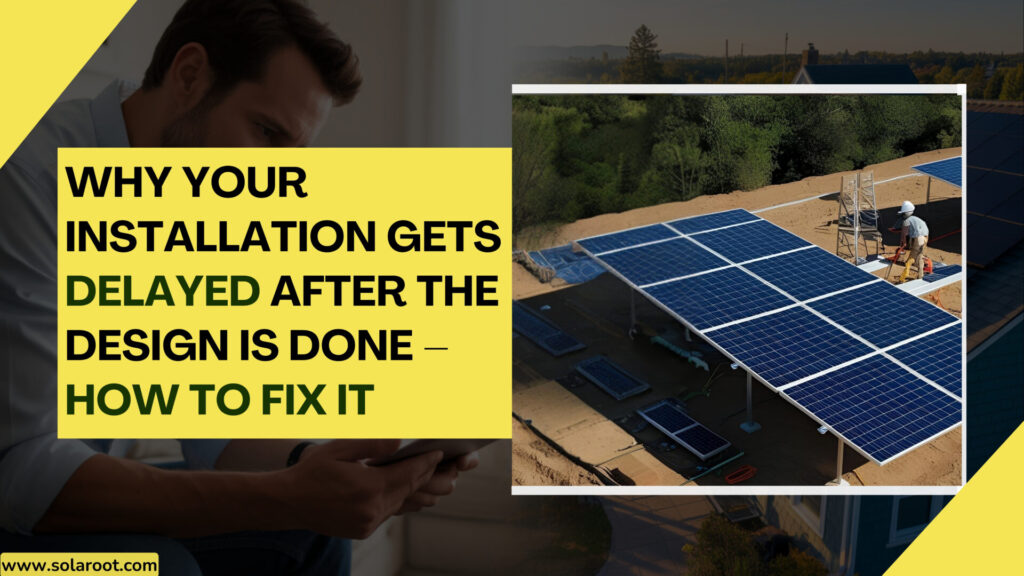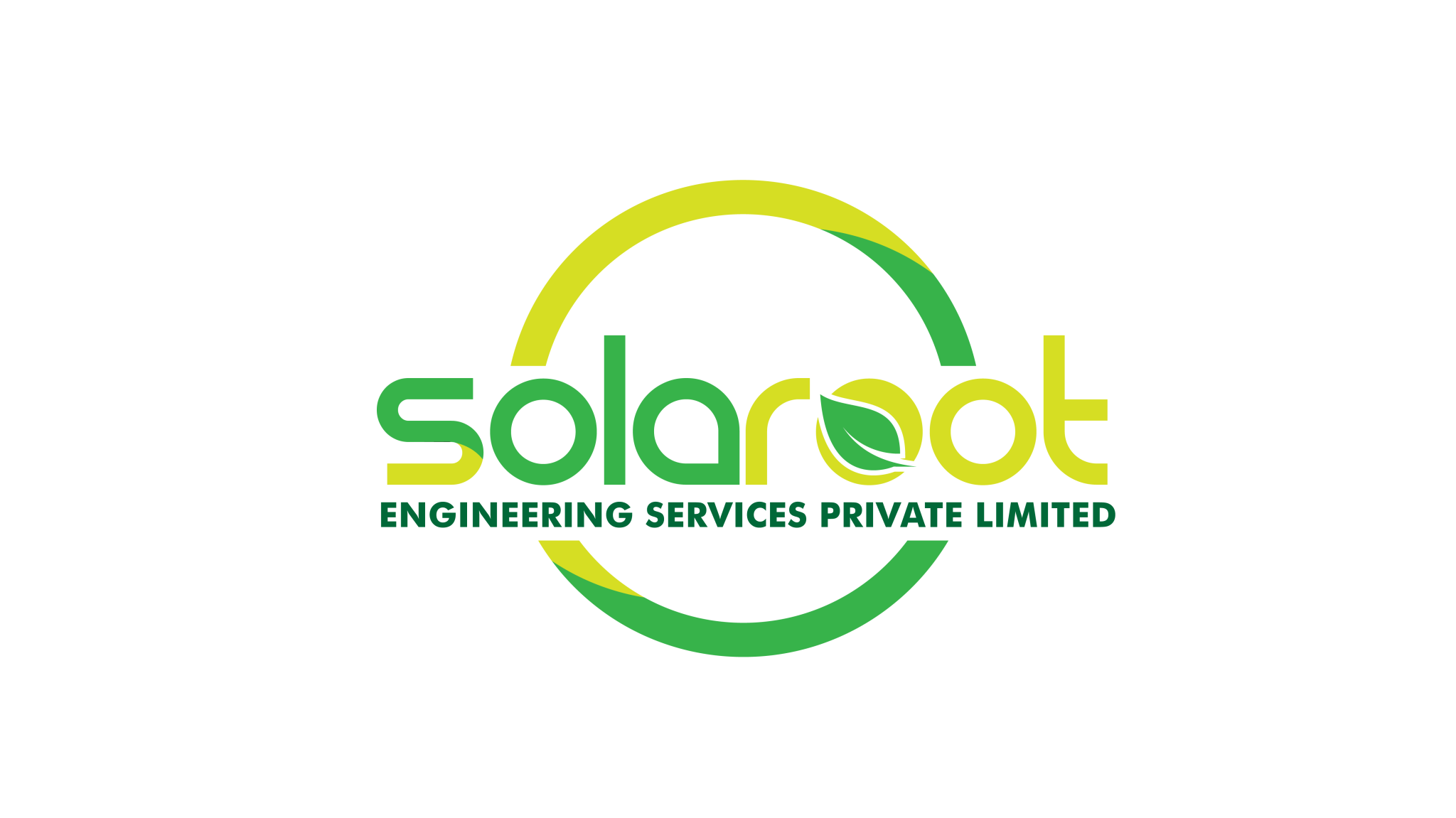Why Your Solar Installation Gets Delayed After the Design Is Done – and How to Fix It
You’ve finally completed your solar design—the panels are perfectly placed, the system is sized right, and you’re excited to move ahead. But then…. things delay. Days turn into weeks, and you start wondering: What went wrong?
If you think it’s happening to you, relax; you’re not alone.
Many homeowners and installers experience unexpected delays after the design phase. The reason is simple: there’s a lot more to solar installation than getting the design approved. The post-design phase involves several steps, many of which are outside the installer’s direct control.
This blog will explain the real reasons behind those delays and, more importantly, how you can prevent them. Let’s get started.
The Common Misconception: Design Completion Means Ready-to-Install

It’s natural to think that once the design is complete, everything else should move quickly. But design is just one part of a much longer chain.
For example, having the architectural drawing doesn’t mean construction starts tomorrow. Similarly, in solar projects, many steps must be followed after the design phase before installation begins. These include securing permits, professional engineer (PE) reviews, utility approvals, material readiness, and scheduling logistics.
Understanding this misconception helps manage expectations and plan accordingly.
Reason 1: Permit Delays
Permits are the biggest obstacle in the post-design process. Depending on your location, you may need:
- Local building permits
- Electrical permits
- Zoning approvals
- Utility interconnection approvals
Each Authority Having Jurisdiction (AHJ) has its own process, timeline, and requirements. Even a small mistake in the permit application, wrong document, outdated code reference, or incomplete details — can lead to rejection and resubmission, costing you valuable time and effort.
How to Fix:
- Work with experienced permitting experts who know your local requirements and save you time and money on the revision work.
- Ensure your design includes all necessary information and is customized to meet jurisdiction-specific codes.
- Consider using a permit service that guarantees a review for completeness before submission. You can also outsource services that provide end-to-end solutions, from permit design to approval. As per your query, the most suitable partner is SOLAROOT!
Reason 2: Waiting on PE Stamps (Professional Engineer Review)
In many states or cities, structural and electrical plans must be reviewed and stamped by a licensed Professional Engineer, also known as a PE stamp (PE). This review validates that the system is safe, structurally well-designed, and code-compliant.
Here’s what usually happens:
- The design is submitted to a PE for review.
- If errors are found, it goes back to the design team for revision and changes.
- Once approved, the PE stamps the design-drawing.
Each revision can take days, especially if the PE is handling multiple projects at one time.
How to Fix:
- Work with or hire a proper design team that performs internal quality checks before PE submission.
- Choose partners that offer in-house or fast-turnaround PE stamping.
- Combine your design and stamping services to keep everything clear and avoid miscommunication, so they can coordinate directly. If you’re getting services from an outsourced provider, then you prefer services that provide a package, for example, designing and engineering, covering permit design to PE stamping.
Reason 3: Poor Communication Between Teams
Solar projects often involve multiple parties:
- Designer
- Installer
- Homeowner
- Permit runner
- Utility company
The project can be delayed if one party assumes the other is handling something (e.g., submitting a permit or confirming HOA rules).
How to Fix:
- Use communication platforms like CRMs or shared project trackers.
- Assign a project coordinator or manager to oversee progress and monitor the employee’s work.
- Schedule regular check-ins and updates with all parties to ensure clarity and alignment. This will help you adhere to the project timeline.
Reason 4: Utility Interconnection Delays
Even if your local permit is approved, the utility company must approve the connection to the grid. This step is often overlooked or delayed.
Some utilities require:
- Detailed interconnection applications
- One-line diagrams
- Load calculations
- Site photos or shading reports
If you don’t submit these early, these reviews can add weeks to your timeline.
How to Fix:
- Start the utility interconnection process as soon as the design is finalized.
- Hire someone for your team who is familiar with utility requirements and paperwork.
- Monitor utility response times and follow up diligently.
Reason 5: Equipment Availability or Scheduling Differences
Even if you have a permit in your hand still, your installation might be delayed due to the following:
- Missing components (inverters, mounting hardware, batteries, etc.)
- Logistics or shipping issues
- Fully booked installation crews – Lack of workforce to work on the installation can also lead to delays.
Delays like these are especially common during peak installation seasons (spring and summer).
How to Fix:
- Always ensure to check equipment stock before finalizing your system design.
- Book your solar installation dates early based on when you expect the permit to be approved.
- Partner with someone who tracks their supply chain and works with trusted vendors.
Reason 6: Homeowner Approvals or HOA Issues
Sometimes, the delay isn’t due to permitting or the installer, but the homeowner or local community rules:
- Homeowners delay signing required forms or payment approvals.
- Homeowners Associations (HOAs) may require aesthetic or structural reviews before allowing a solar installation.
How to Fix:
- Educate homeowners about all required steps at the start of the process.
- Review HOA guidelines during design planning.
- Prepare documents for HOA review early to avoid last-minute rejections.
How to Prevent These Delays: 6 Practical Tips
Now that you know what causes delays, here are practical ways to avoid them:
Tip 1: Choose a Design-to-Permit Partner
Work with a team that handles everything from drawings to engineering stamps to permit submission. One point of contact reduces delays and keeps everything on schedule. Outsourcing is another option if you want design-to-engineering service in one place, so companies like Solaroot are your one-stop solution, providing you with quality work.
Tip 2: Start Permitting Early
Don’t wait for installation plans to submit your permits. Begin the permit and interconnection process right after your design is finalized.
Tip 3: Use a Project Tracking Tool
Tools like CRMs or project dashboards let everyone (designer, installer, homeowner) see real-time updates. They help identify obstacles quickly and improve accountability.
Tip 4: Confirm Equipment Availability
Check with suppliers about stock levels of panels, inverters, and racking materials. Finalize orders early to avoid backorders.
Tip 5: Educate Homeowners from Day One
You can help homeowners understand the entire process, including their responsibilities for approvals, signatures, and potential HOA restrictions.
Tip 6: Stay Proactive with Permits and Utility
Get updated regularly with your AHJ and utility. Follow up, provide additional documents quickly, and track approval timelines so you can act fast.
Conclusion
In conclusion, delays after solar design approval are more common than you might think, but they’re not necessary. In most cases, they result from no clear communication, missed permitting steps, and uncoordinated logistics.
Taking a suitable approach, simplifying communication, and working with an experienced end-to-end partner can turn a frustrating waiting period into a smooth, predictable installation timeline.
Solar energy is a long-term investment. A small planning upfront ensures you enjoy the benefits of clean energy faster – with fewer headaches along the way. Stay connected with us for more informative blogs, or you can catch us on LINKEDIN for more regular and daily solar industry updates that are easier to understand.



